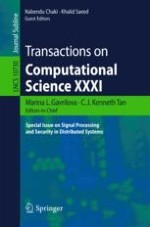2018 | Book
Transactions on Computational Science XXXI
Special Issue on Signal Processing and Security in Distributed Systems
Editors: Prof. Marina L. Gavrilova, C.J. Kenneth Tan, Nabendu Chaki, Khalid Saeed
Publisher: Springer Berlin Heidelberg
Book Series : Lecture Notes in Computer Science
